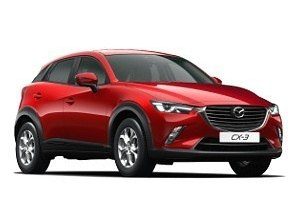
Механические нагнетатели. Какие бывают
Содержание
В процессе производства автомобилей, инженеры задумываются не только о внедрении технологий последнего слова, современной внешности и первоклассной безопасности. Сегодня автомобильные двигатели внутреннего сгорания пытаются сделать меньше, а получить КПД больше. Внедрение механического нагнетателя и есть один из таковых способов — “выжать” максимум, даже с маленького 3-х цилиндрового мотора.
Что собой представляет механический компрессор, как он устроен и работает, каковы его преимущества и недостатки — поговорим об этом далее.
Что такое механический нагнетатель
Механическим нагнетателем называется устройство, которое принудительно, под высоким давлением подает воздух для повышения массы топливно-воздушной смеси. Привод компрессора осуществляется вращением шкива коленчатого вала, как правило устройство сообщается через ремень. Принудительное сжатие воздуха при помощи механического турбокомпрессора обеспечивает дополнительные 30-50% мощности от номинальной (без компрессора).
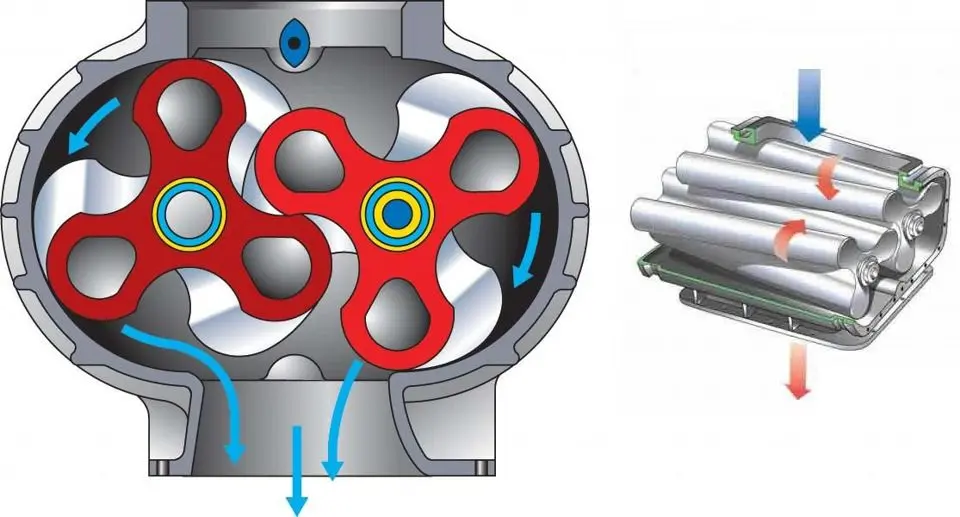
Принцип работы механического наддува
Вне зависимости от типа конструкции, все нагнетатели направлены на сжатие воздуха. Приводной компрессор начинает работать сразу при запуске мотора. Коленчатый вал, через шкив передает крутящий момент на компрессор, и тот, в свою очередь, вращением лопастей или роторов, сжимает впускной воздух, принудительно подает его в цилиндры двигателя. Кстати, рабочие обороты компрессора во много раз выше оборотов коленвала ДВС. Давление, создаваемое компрессором, может быть внутренним (создаваться в самом узле) и внешним (давление создается в нагнетательном трубопроводе).
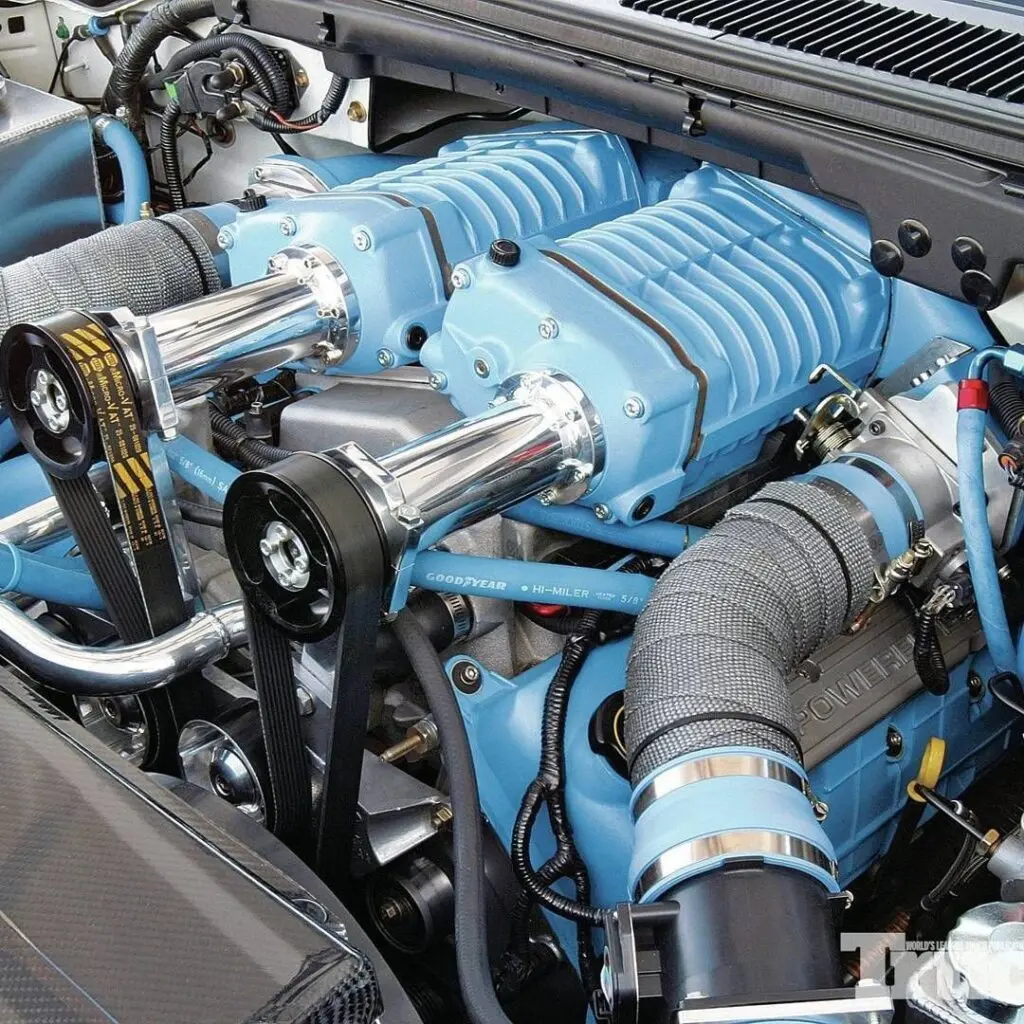
Устройство механического наддува
Стандартная система приводного нагнетателя состоит из следующих элементов:
- непосредственно компрессор;
- дроссельная заслонка;
- перепускной клапан с заслонкой;
- воздушный фильтр;
- датчик давления;
- датчик температуры воздуха во впускном коллекторе, и датчик абсолютного давления.
Кстати, для компрессоров, рабочее давление которых не превышает 0,5 бар, не требуется установка интеркуллера — достаточно усовершенствовать штатную систему охлаждения и обеспечить в конструкции холодный впуск.
Управляется воздухонагнетатель положением дроссельной заслонки. Когда двигатель работает на холостом ходу, есть вероятность получить избыточное давление во впускной системе, что вскоре приведет к неисправности компрессора, поэтому здесь предусмотрена заслонка перепускного трубопровода. Часть этого воздуха поступает обратно в компрессор.
Если система оснащена интеркулер, то степень сжатия воздуха будет выше, за счет снижения его температуры на 10-15 градусов. Чем ниже температура впускного воздуха — тем качественнее происходит процесс горения, исключается возникновение детонации, двигатель будет работать стабильнее.
Типы привода механического наддува
За десятки лет использования механического компрессора, автопроизводители применяют различные типы привода, а именно:
- прямой привод — непосредственно от жесткого зацепления с фланцем коленчатого вала;
- ременной. Наиболее распространенный вид. Могут применяться зубчатые, гладкие и ручейковые ремни. Отмечается привод быстрым износом ремня, а также вероятностью проскальзывания, особенно на холодном моторе;
- цепной — аналогичен ременному, однако имеет недостаток в виде повышенной шумности работы;
- шестеренчатый — также отмечается избыточная шумность и большие габариты конструкции.
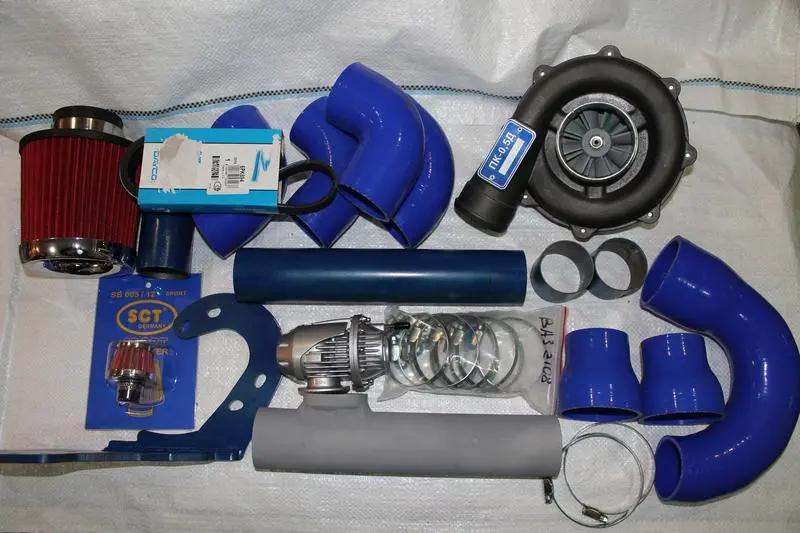
Виды механических компрессоров
Каждый из видом нагнетателей обладает индивидуальным эксплуатационным свойством, а всего таких три вида:
- центробежный компрессор. Наиболее распространенный вид, который внешне очень похож с турбокомпрессором, работающего от выпускных газов (улиткой). Здесь используется крыльчатка, скорость вращения которой достигает 60 000 оборотов в минуту. В центральную часть компрессора воздух поступает с высокой скоростью и малым давлением, а на выходе обратная картина — в цилиндры подается воздух под высоким давлением, но с низкой скоростью. В современных авто такой вид нагнетателя используют вместе турбокомпрессором во избежание турбоямы. На низких оборотах и переходных режимах, приводная “улитка” будет стабильно подавать сжатый воздух;
- винтовой. Главные элементы конструкции — параллельно установлены два конических шнека (винта). Воздух, попадя в компрессор, сначала проходит через широкую часть, после сжимается за счет вращения двух винтов, обращающихся во внутрь. В основном устанавливают на дорогие авто, да и сама цена на такой компрессор немалая — сказывается сложность конструкции и эффективность;
- кулачковой (Roots). Это один из первых механических нагнетателей, устанавливаемых на автомобильные двигатели. Рутс представляет собой пару роторов со сложным сечением профиля. Во время работы воздух перемещается между кулачками и стенкой корпуса, за счет чего происходит сжатие. Главный недостаток заключается в образовании избыточного наддува, поэтому конструкцией предусмотрена электромагнитная муфта управления компрессором, или перепускной клапан.
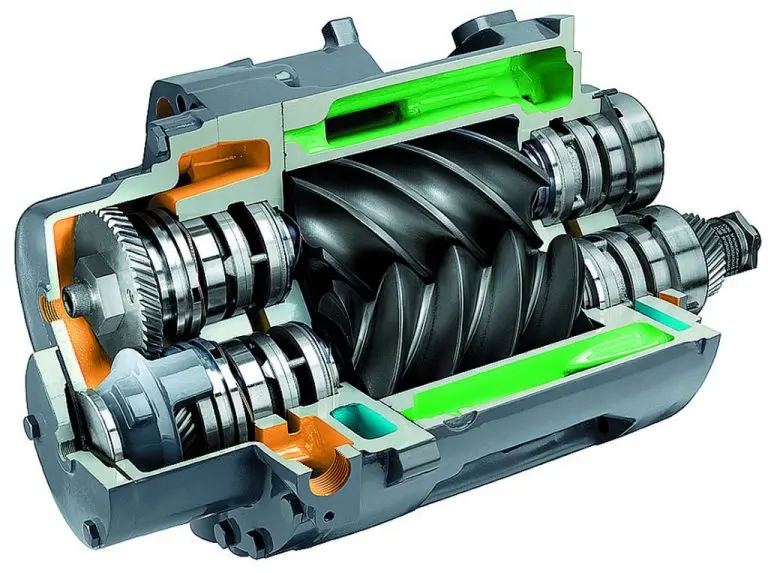
Механические компрессоры вы можете встретить на машинах известных производителей: Audi, Mercedes-Benz, Cadillac и другие. Устанавливают их на высокообъемные моторы, либо в малолитражки в тандеме с турбиной, работающей от энергии газов.
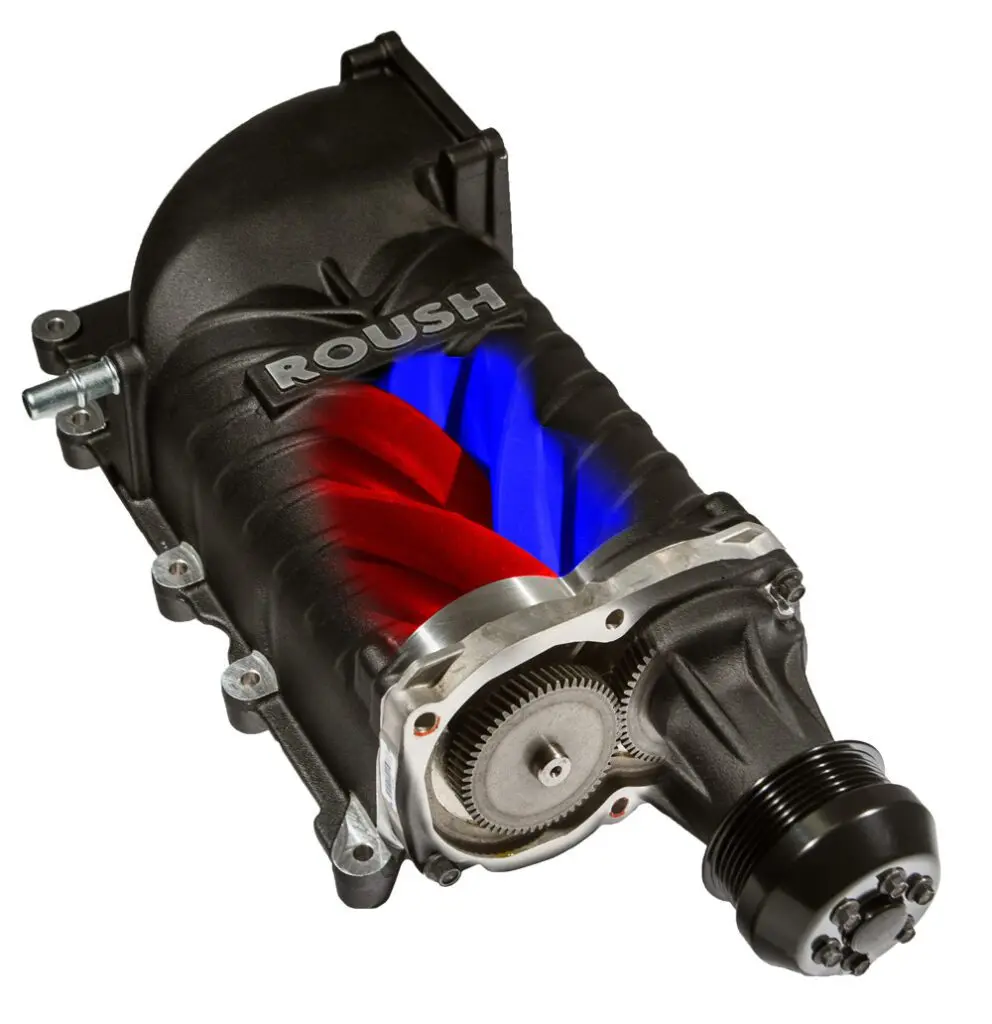
Преимущества и недостатки схемы с механическим нагнетателем
Что касается недостатков:
- приведение в движение компрессора посредством привода от коленвала, тем самым нагнетатель отбирает часть мощности, хотя успешно ее компенсирует;
- высокий уровень шума, особенно на средних и высоких оборотах;
- при номинальном давлении свыше 5 бар необходимо менять конструкцию двигателя (устанавливать прочные поршни с шатунами, уменьшать степень сжатия за счет установки толстой прокладки ГБЦ, монтировать интеркулер);
- низкое качество нештатных центробежных компрессоров.
О достоинствах:
- стабильный крутящий момент уже с холостых оборотов;
- возможность эксплуатации автомобиля без надобности набирать обороты двигателя выше средних;
- стабильная работа на высокой скорости;
- относительно турбокомпрессора, нагнетатели дешевле и проще в обслуживании, не требуется изменять конструкцию масляной системы для подачи масла к компрессору.
Вопросы и ответы:
Как работает механический нагнетатель? В корпусе нагнетателя имеется диффузор. Когда крыльчатка вращается, воздух всасывается и направляется к диффузору. Оттуда он поступает в полость, расходующую этот воздух.
Для чего предназначен и как действует механический нагнетатель? Этот механический агрегат сжимает газ, не охлаждая его. В зависимости от типа нагнетателя (конструкция механизма, собирающего газ) он способен создать давление газа выше 15 кПа.
Какие бывают нагнетатели? Самые распространенные нагнетатели – центробежные. Также бывают винтовые, кулачковые и роторно-поршневые. У каждого из них свои особенности работы и создаваемое давление.
